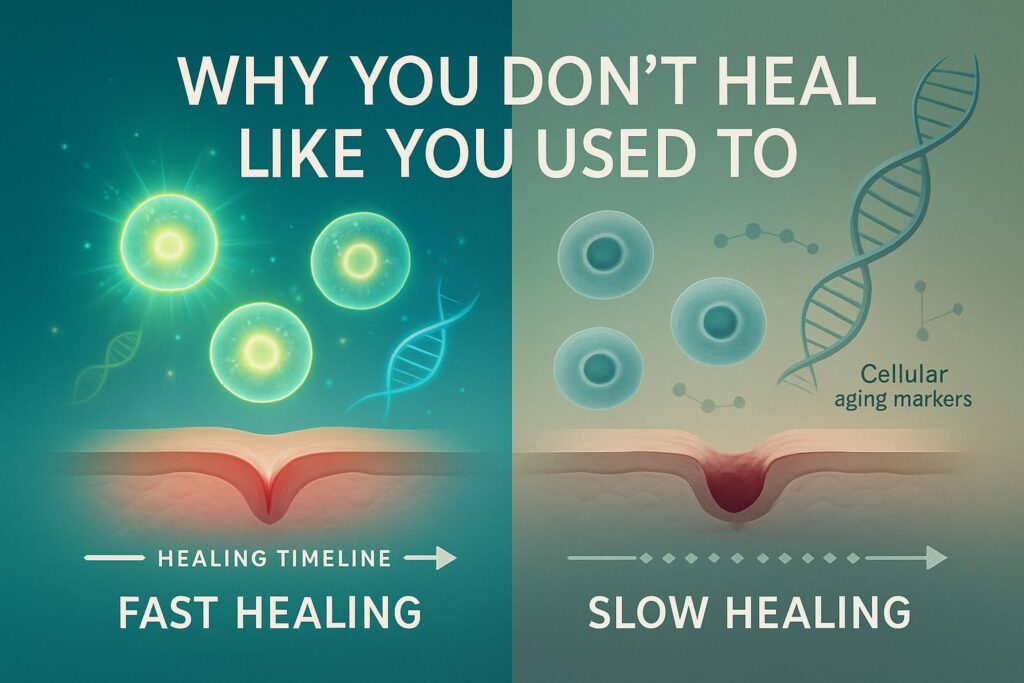When it comes to multiple sclerosis (MS), a condition characterized by the immune system mistakenly attacking the protective sheath (myelin) that covers nerve fibers, causing communication problems between the brain and the rest of the body, the quest for an effective treatment has been both challenging and relentless. While there is no cure for MS, stem cell therapy has emerged as a beacon of hope, offering potential treatments that could not only alleviate symptoms but also possibly halt or even reverse the disease’s progression. In this article, we’ll delve into the world of stem cell therapies and explore their application in the treatment of multiple sclerosis.
Imagine if we could reboot the body, much like restarting a computer to fix a software issue. This is the analogy often used to describe the concept behind hematopoietic stem cell transplantation (HSCT), a type of stem cell therapy that aims to reset the immune system. But the landscape of stem cells and their use in treating diseases like MS is vast and complex. From mesenchymal stem cell (MSC) therapy to the use of induced pluripotent stem cells (iPSCs), we are on the cusp of a new era in medicine where the once-thought impossible becomes possible.
As we embark on this journey through the latest advancements in cell therapy for multiple sclerosis, we’ll discuss the different types of stem cells, the current state of clinical trials, and the real-world impact on people with MS. The road ahead is filled with both promise and caution, as we navigate the intricacies of harnessing the body’s own cells to treat a condition that affects more than 2.3 million people worldwide.
Understanding Multiple Sclerosis
The Complex Nature of MS
Multiple sclerosis is a shape-shifter, presenting in various forms and affecting each individual differently. The most common type, relapsing-remitting MS, is characterized by episodes of new or increasing symptoms, followed by periods of remission. On the other hand, progressive MS is a relentless march of symptoms and disability. The symptoms of MS can range from numbness and tingling to mobility challenges and cognitive issues, making it a disease with a thousand faces.
The Immune System’s Role
At its core, MS is an autoimmune condition where the body’s own immune cells launch an attack on the myelin sheath. This leads to inflammation and lesions, which disrupt the nerve signals. Imagine the myelin sheath like the insulation on electrical wires; when damaged, the messages that travel along the nerves become slow or distorted.
Stem Cells: A Primer
The Basics of Stem Cells
Stem cells are the body’s raw materials, cells from which all other cells with specialized functions are generated. Under the right conditions, stem cells divide to form more cells called daughter cells. These daughter cells either become new stem cells (self-renewal) or specialized cells (differentiation) with a more specific function, like blood cells, brain cells, heart muscle cells, or bone cells. No other cell in the body has the natural ability to generate new cell types.
Types and Sources of Stem Cells
There are several types of stem cells, including embryonic stem cells, adult stem cells, and induced pluripotent stem cells (iPSCs). Embryonic stem cells come from unused embryos resulting from an in vitro fertilization procedure and can turn into more than one type of cell. Adult stem cells are found in small numbers in most adult tissues, such as bone marrow or fat. Induced pluripotent stem cells are adult cells that have been genetically reprogrammed to an embryonic stem cell-like state.
Stem Cell Therapies in Development for MS
Hematopoietic Stem Cell Transplantation (HSCT)
Hematopoietic stem cell transplantation is a procedure that aims to reboot the immune system. The process involves the extraction of hematopoietic stem cells (a type of stem cell that can develop into all types of blood cells, including immune cells) from the patient’s bone marrow or blood, followed by a course of chemotherapy to deplete the existing immune system, and then the reintroduction of the stem cells to rebuild the immune system from scratch.
Mesenchymal Stem Cell (MSC) Therapy
Mesenchymal stem cells (MSCs) are a type of stem cell found in several places in the body, including the bone marrow, skin, and fat tissue. They are known for their ability to modulate the immune system and promote tissue repair. MSC therapy for MS is based on the idea that these cells can not only help control inflammatory responses but also contribute to the regeneration of myelin.
The Potential of Neural Stem/Progenitor Cells (NPCs)
Neural stem/progenitor cells (NPCs) are a type of stem cell found in the brain and spinal cord that can differentiate into neurons and glial cells, the latter being crucial for the formation of myelin. NPCs are being studied for their potential to promote remyelination and repair in MS.
The Future with Induced Pluripotent Stem Cells (iPSCs)
Induced pluripotent stem cells (iPSCs) are adult cells that have been genetically reprogrammed to behave like embryonic stem cells. They represent a promising avenue for personalized medicine, as they could potentially be used to generate a wide range of cell types for transplantation without the risk of rejection, since they can be derived from the patient’s own cells.
Clinical Trials and Research
Progress in Clinical Trials
Clinical trials are the gold standard for testing new treatments. In the realm of stem cell therapy for multiple sclerosis, several trials have shown promising results, particularly with HSCT. These trials have demonstrated significant reductions in inflammatory MS activity and, in some cases, improvements in disability.
Research Findings and Patient Outcomes
Research into stem cell therapies for MS is ongoing, with studies showing varying degrees of success. Some patients in clinical trials have experienced long periods of remission following treatment, while others have seen improvements in ms symptoms. However, it’s important to note that these treatments are still in the experimental stages, and long-term efficacy and safety are yet to be fully established.
Mechanisms of Action
Modulating the Immune System
The primary goal of stem cell therapy for MS is to halt the autoimmune attack on the myelin sheath. In the case of HSCT, the replacement of the diseased immune system with a new one via stem cell transplant is akin to hitting the reset button, offering the chance for the body to stop attacking itself.
Remyelination and Neuroprotection
Another key mechanism is the promotion of remyelination, where stem cells such as NPCs or MSCs could potentially repair the damaged myelin. This is like patching up the insulation on wires to ensure that electrical signals can travel smoothly again.
Neural Repair and Functional Recovery
Ultimately, the hope is that stem cell therapies can not only protect and repair the nervous system but also restore function. This could mean turning back the clock on disability for people with MS, giving them back a level of independence that was once thought to be lost.
Ethical, Legal, and Social Implications
Navigating the Ethical Landscape
The use of stem cells, particularly embryonic stem cells, has been fraught with ethical debate. The crux of the issue lies in the source of these cells and the moral status of the embryos from which they are derived. However, with the advent of iPSCs and the use of adult stem cells, many of these ethical concerns are being addressed.
The Regulatory Framework
Regulatory agencies play a crucial role in ensuring the safety and efficacy of new treatments. Stem cell therapies for MS are subject to rigorous testing and approval processes, which are essential in safeguarding patient interests.
The Importance of Advocacy and Access
Patient advocacy groups are vital in the fight for access to new treatments. They not only support research funding but also help navigate the complex landscape of insurance and healthcare systems to ensure that treatments for MS become accessible to those who need them most.
Challenges and Limitations
Technical and Scientific Hurdles
While the potential of stem cell therapy is immense, there are significant technical challenges. These include understanding the optimal type of stem cell to use, the best methods for cell delivery, and the long-term effects of these treatments.
The Current State of Research
Research into stem cell therapy for MS is still in its infancy, and many questions remain unanswered. Large-scale, long-term clinical trials are needed to fully understand the benefits and risks of these therapies.
Personalized Medicine and MS
Multiple sclerosis is a highly individual disease, which means that a one-size-fits-all approach is unlikely to be effective. Personalized medicine, where treatments are tailored to the individual’s specific disease characteristics, is likely to be the future of MS treatment.
Future Directions
Innovations on the Horizon
The field of stem cell therapy is rapidly evolving, with new technologies and approaches being developed at an unprecedented pace. Innovations such as gene editing and tissue engineering hold the promise of even more effective treatments for MS in the future.
The Potential for Combination Therapies
Stem cell therapy may not be a standalone cure for MS but could be part of a combination of therapies that together tackle the disease from multiple angles. This could involve the use of stem cells alongside drug therapies, rehabilitation, and lifestyle changes.
The Dream of a Cure
Ultimately, the goal is to find a cure for MS. While we are not there yet, the advances in stem cell therapy bring us closer to the possibility of not just managing but defeating this complex and unpredictable disease.
FAQ
Q: What are stem cell-based therapies for multiple sclerosis (MS)?
A: Stem cell-based therapies for MS involve using different types of stem cells to treat the symptoms and progression of the disease.
Q: What types of stem cells are utilized in the treatment of MS?
A: The types of stem cells used for MS treatment include autologous hematopoietic stem cells, haematopoietic stem cells, neural stem cells, and mesenchymal stem cells, among others.
Q: How effective is stem cell therapy for MS?
A: Research has shown that stem cell therapy can be effective in treating MS, particularly in halting the progression of the disease and managing symptoms.
Q: What are the different treatment options for MS using stem cells?
A: Treatment options include autologous hematopoietic stem cell transplantation, mesenchymal stem cell therapy, and haematopoietic stem cell transplantation, among others.
Q: Can stem cell therapy provide a cure for multiple sclerosis?
A: While stem cell therapy offers promising results, it is not yet considered a definitive cure for MS. However, it can significantly improve the quality of life for patients and slow down the disease progression.
Q: How are stem cells used to treat progressive multiple sclerosis?
A: Stem cells are used to treat progressive MS through methods such as autologous mesenchymal stem cell transplantation and other advanced therapeutic approaches.
Q: What are the benefits of using stem cells in the treatment of MS?
A: Using stem cells can help manage MS symptoms, slow down disease progression, and provide potential long-term therapeutic benefits for patients with MS.
Q: Are there any risks associated with stem cell-based therapies for MS?
A: While stem cell therapy has shown promise, there are potential risks such as infection, immune system reactions, and organ complications. Patients should discuss the risks with their healthcare providers before considering this treatment option.
Q: What is the role of neural stem cells in stem cell-based therapy for MS?
A: Neural stem cells play a crucial role in potential regenerative approaches for MS, aiming to repair damaged nerve cells and restore neurological function in affected individuals.
Q: How can stem cell therapy help in the management of secondary progressive MS?
A: Stem cell therapy offers potential avenues for managing secondary progressive MS by targeting the underlying disease mechanisms and promoting neuroregeneration and immune regulation.
Conclusion
The journey of stem cell therapy in the treatment of multiple sclerosis is one of the most exciting frontiers in modern medicine. With each passing day, we learn more about the potential of these remarkable cells to change the lives of people with MS. While challenges remain, the promise of stem cell therapies offers a new horizon of hope for millions around the world.
References
ClinicalTrials.gov: Hematopoietic Stem Cell Transplantation for MS
National MS Society: Stem Cell Therapy
Journal of Translational Medicine: Mesenchymal Stem Cells in MS



